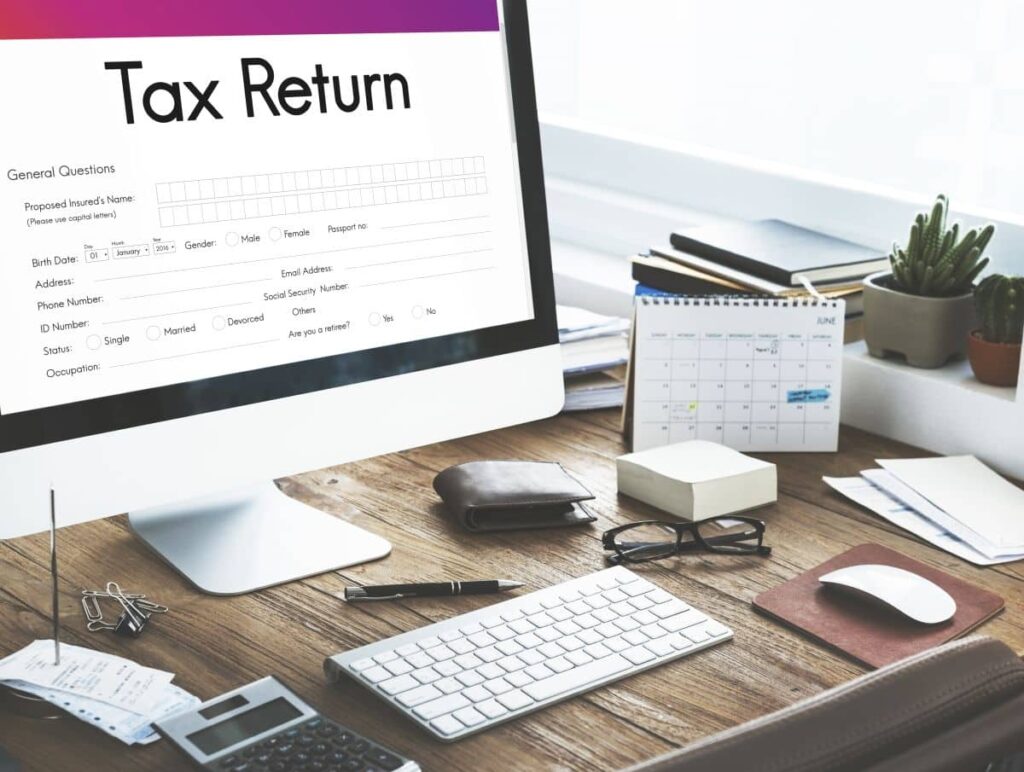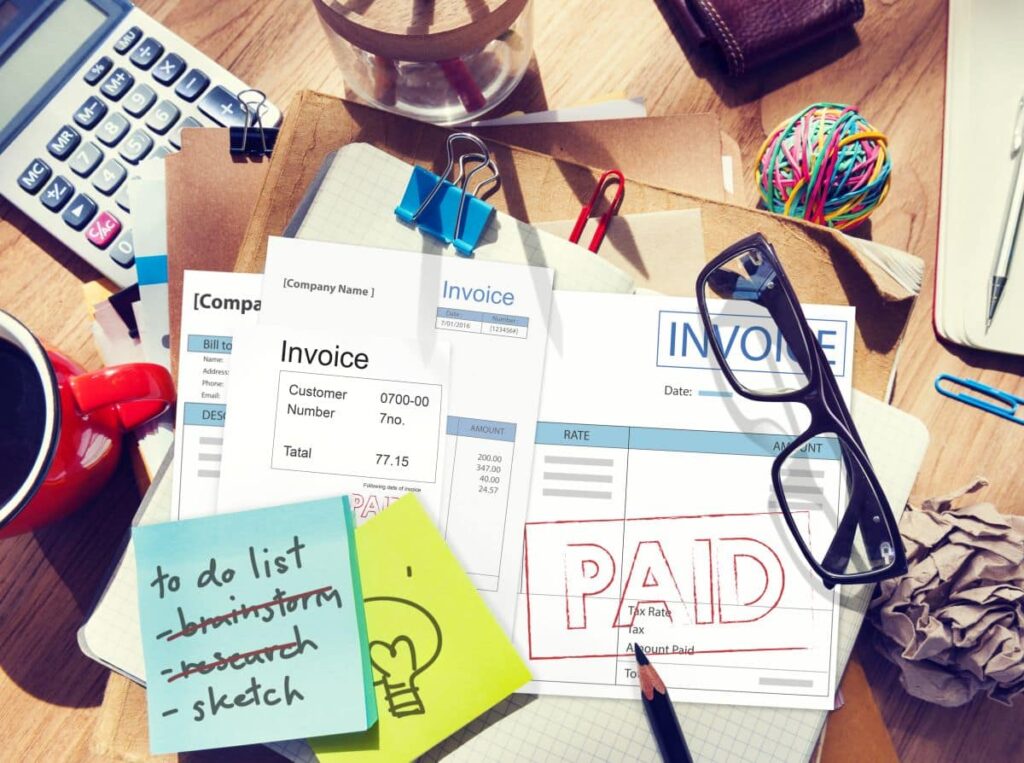Do you have a business that deals with taxes? It’s no secret that the tax system can be incredibly confusing and time-consuming for small businesses. Thankfully, there are steps you can take to reduce the amount of money your business pays in taxes each year.
In this blog post, we'll review different strategies to help you save on taxes in 2023, so your business can use more of its hard-earned earnings. We'll provide tips to maximise deductions, credits and other incentives offered by both federal and state governments — all designed to make it easier (and possibly cheaper) for small business owners like yourself to pay their annual monetary contributions.
So if you're ready to learn how smart tax-saving strategies can benefit your bottom line, then let's get started!
Tax Planning Tips
The end of the fiscal year will arrive before we know it because June 30 is right around the corner. Therefore, your anticipated taxable income for the current fiscal year 2022-23 (which is your company's assessable income minus any deductible expenses), as well as your projected or expected taxable income for the following year, 2023-24, should be reviewed at this time. Doing so will assist you in formulating an effective strategic plan for tax planning.
Speak to your accountant about the following things to take into account if you anticipate having a higher income during the current fiscal year in comparison to your predictions or estimates for the subsequent fiscal year:
- You can save money in the long run by paying for some of your bills for the year 2023-24 in advance, like your rent, your insurance, or your membership dues to professional organisations, during the fiscal year 2022-23. This is because the current tax year permits the deduction of up to 12 months' worth of costs incurred during the next year.
- Reaping the benefits of depreciation metrics like temporary full expensing, which allows you to instantly deduct the company part of the expense of qualified depreciating assets that are first held and first utilised or assembled ready for use for a taxable purpose. Other examples of depreciation metrics include bonus depreciation and straight-line depreciation.
- You should review your invoices for the current tax year and consider delaying some of them if it makes sense to do so.
- Increasing the amount of your voluntary payments to your superannuation.
- A review of your creditors and the cancellation of any debts that cannot be collected on (find out more about deductions for unrecoverable income).
- Deducting, if appropriate, any startup costs, like seeking legal or accounting guidance on your corporate structure and fees related to setting up the structure (e.g. ASIC company registration fee).
Talk to your accountant about the following things to think about if you anticipate having a higher income during the following fiscal year (2023-2024):
- Bringing forwards any invoices into the current fiscal year for scheduled work that will be done in the following fiscal year if it is suitable to do so. The next financial year will be used to complete the tasks.
- During the current tax year, paying for your costs when they are owed to you as opposed to making any prepayments for such charges.
- Buying any necessary assets or pieces of equipment for the firm during this year. If you choose to buy assets for your company, you should do so with your company's requirements in mind. For instance, you may be required to buy a truck for deliveries to help extend your company's operations in order to meet certain corporate objectives or because doing so is in accordance with the business strategy that you have developed.
Additional Tips
- When saving money on taxes, you should avoid making purchases of company assets. When it comes to taxes, you'll spend one dollar to save thirty cents (*based on the typical tax rate for businesses).
- In the event that your company incurs a loss, you can claim a deduction for it in a subsequent year, use it to offset other losses in the current year, or carry back your tax loss. Learn more about the financial losses that businesses face.
Compliance Checks Conducted By The ATO Regarding Trust Distributions
When trust income is assigned on paper to a recipient on a reduced tax rate, but another person obtains the advantage of the underlying assets, the long-standing anti-avoidance regulations in section 100A of the tax act may be applicable. These rules are intended to prevent tax dodging and are part of the tax act.
Over the course of the years, this topic has received a little amount of attention; however, the ATO has just begun a compliance programme with a redoubled emphasis on the administration of these regulations.
Particularly important is the practice of distributing money from trusts to children who are now adults, as well as the exemption from these anti-avoidance regulations that apply to transactions that take place within the normal course of family or business life (which is not defined as to what that means).
The Australian Taxation Office (ATO) has published a draft ruling (TR 2022/D1) that outlines their perspectives on these regulations. They have also published a draft Practical Compliance Guideline (PCG 2022/D1) that outlines, in essence, whose tax agreements will be subject to revision and whose won't be reviewed. Both of these documents can be found on their respective websites.
Despite the fact that these proclamations are still only in draft form, trustees should take them into account when making choices about the assignment of trust income running up to June 30, 2023 and beyond.
Company Tax And Franking Rates
Tax Rate
A corporation is considered to be a Base Rate Entity (BRE) for an income year if its group-wide company turnover is less than $50 million and if passive income accounts for no more than 80% of the company's total revenue. In addition, BREs are required to pay a business tax of 25% of their gross revenue.
The thirty per cent tax rate applies to all other types of businesses. A business may qualify as a BRE in one year, then fall out of that category the following year, and so on. As a result of these adjustments, the appropriate tax rate for the year will change.
Franking Rate
The process of franking dividends either at the 30% rate (i.e., dividend x 30/70) or the 25% rate (dividend x 25/75) might result in the attachment of tax credits to the dividends. Both the rate at which a dividend is franked and the rate at which the firm will be subject to income tax for the year is established in a manner that is independent of one another.
As a consequence of this, a firm may pay tax at one rate for a whole year, but it might frank a dividend given in the same year at a different rate. This could result in an overpayment of taxes or leave you with franking credits that you can't utilise.
Small Business Simplified Depreciation

A simplified depreciation scheme is an option for companies whose group-wide revenue is less than $10 million, and almost all of these companies do choose to use it. After adding up all of the expenditures associated with the depreciation of assets, a more straightforward depreciation deduction may be determined for the year.
These guidelines for streamlined pooled depreciation are a condensed version of the temporary full expensing criteria presented earlier. However, one significant distinction stands out for companies that have opted to use the streamlined pooled depreciation scheme, and that is the fact that they are not permitted to waive the full expensing of their assets.
In addition, you will be eligible for a deduction equal to the closing written-down balance of the depreciating asset pool as of June 30 in 2023. To reiterate, you do not have the option to avoid this deduction.
As was mentioned, practically all companies that have a group-wide turnover of less than $10 million opt to use this simplified pooling depreciation instead of the traditional method. As a result, the deductions that are required of these enterprises may result in a less-than-ideal tax situation.
Concessions Available For Small Business Entities
Small company entities, defined as those with a group-wide turnover of less than $10 million, might well be eligible for certain tax breaks beginning with the income tax year 2023, including the following:
- Instant write-off for the value of any depreciating assets;
- Streamlined depreciation guidelines for all other assets that are subject to depreciation
- Rollover for small businesses undergoing reorganisation;
- Deduction applied right away for initial startup expenses;
- The deduction was made right away for a few expenses that were pre-paid;
- Streamlined trading regulations for stocks;
- Improved PAYG tax instalment regulations;
- Accounting for GST based on cash transactions, GST instalments computed by the ATO; and
- Exemption from value-added tax for parking cars and supplying a variety of portable electronic gadgets (e.g. laptops, mobile phones).
Abolition Of SG $450 Threshold
If an employee earns less than $450 in a month from their boss, the boss is exempt from the duty to pay the SG amount. This provision has been in place ever since the introduction of compulsory superannuation. However, as of July 1 in 2022, the minimum income requirement of $450 has been eliminated.
Since then, employers have been obligated to pay the SG amount of 10.5% for each worker, regardless of how little the worker earns from the company in any given month. This requirement applies even if the worker has worked for the company for a very long time.
The idea behind mandatory retirement savings plans has always been that workers should make a contribution out of their own pocket rather than the company picking up the tab for further compensation.
As a consequence of this, any awards or negotiated pay agreements for impacted employees in which the threshold exemption is integrated will be altered in some way as a result of this. Again, this would primarily apply to younger workers and part-time workers.
Businesses have till this coming July 1 to ensure that the payroll tax systems they use are current to guarantee that employee contributions are computed accurately.
Strategies
1. Plan Your Financial Transactions and Flows
The majority of companies go through periods of positive and negative cash flow as a result of activities such as buying goods and equipment, paying personnel, and collecting payments. The unexpected receipt of a sizable tax bill can place an inordinate amount of strain on the cash flow of a company or a household's finances.
You may smooth out the roller coaster and concentrate on other important areas of your company if you plan out your cash flow and anticipate when your tax deadlines will be.
2. Make A Schedule For The Due Dates Of Any Payments
If you miss the deadline for paying your taxes, you could face substantial penalties such as penalties and a strain on your ability to make payments. Therefore, be prompt in making your tax payments by properly planning for them so that you can avoid incurring any additional costs.
Your worry will be reduced, and you will be in a better position to achieve consistent achievement if you plan out your tax payments in advance and create a budget to cover them well in advance.
3. Cover Your Obligations Regarding Superannuation
Contemplate using superannuation as a tax scheme if you require an extra deduction to bring down your tax liability and are interested in doing so.
If you pay off your superannuation obligations early, you can get a discount for the previous year's taxes. In addition, the enhanced budgetary and cash-flow flexibility that can result from early deduction planning is a significant benefit.
4. Bring Forward Other Expenses
This method of tax planning is comparable to the method of paying off superannuation obligations. If you bring forward other expenditures, you will be able to get the deduction for them this year, which will result in a reduction in the taxes you owe right away.
5. Increase The Amount Of Money You Put Into Your Retirement Account
You can improve your retirement savings while simultaneously lowering the amount of tax you owe. This is a situation in which everyone involved comes out ahead. You are able to accomplish this goal by contributing more money to your superannuation account at your employer.
There are a lot of people who discover that they can easily readjust their spending habits such that they can afford to make more payments to their retirement accounts. Of course, once in a while, you do not even miss the additional money, but you do like seeing your retirement account balance increase at a faster rate.
6. Vary Down Instalments
Another tax method that you might not have utilised in the past is presented here.
You can prevent the situation in which you overspend your income taxes and then have to wait until your return is submitted to get the cashback by varying down your instalment payments.
If you have some extra cash on hand right now, you can use it towards paying off some of your other expenses or towards reducing the total amount of money you owe.
This technique will help you to balance out your cash flow and regain control of the funds that were taken from you for the most of the year. It will also allow you to take advantage of any opportunities that may arise.
General Business Issues
1. Manage Your Private Company Loans
There are integrity standards in place to prevent individuals from using corporate funds in a tax-preferred manner, despite the fact that those resources have been taxed at the rate applicable to the firm rather than by taking them out in the form of a dividend. These limitations are in place because there is a significant disparity between the top personal tax rate of 47% and the corporation tax rate of 30%/25%.
Caution is necessary if a private corporation forgives a debt owed by a shareholder, makes a loan or payment to a shareholder (or an associate of the shareholder), or pays a shareholder directly (or associate).
For example, present unpaid entitlements (UPEs) created by a trust to a corporation might well be handled as either a loan by the business to the trust or might continue to stay a UPE in situations where a trust gets to appoint trust income to a private business beneficiary without the cash payment to the company.
Because this is such a technical area of tax law, but because it affects a large number of firms, you should discuss any sort of advance or credit from trusts or businesses to linked parties with your counsel as soon as possible.
2. By June 30, You Should Have Reviewed Your Trust Deeds And Made Any Necessary Trust Resolutions
In order for trustees to assign trust income to recipients, they are normally required to issue legal resolutions before June 30 (or an earlier period if stipulated in the trust deed). Suppose trustees need to adopt legal appointment resolutions by June 30. In that case, the trustee faces the possibility of being assessed on all of the trust's taxable income at the highest marginal tax rate, which is now 47%.
It is also important to note that recipients are required to provide their TFNs to trustees before a trustee can appoint trust income to them for the first time. Therefore, if recipients screw up in providing their TFNs, trustees will be required to withhold tax at a rate of 47% from the trust income that has been assigned to the recipient.
The Trust Deed provisions must be adhered to provide trustee income assignment resolutions that are legally binding.
3. Examine Your Past Due Obligations As Well As Your Outdated Plant And Machinery
An evaluation of outstanding debtors ought to take place before June 30 in order to ascertain the probability of not getting payment and whether or not efforts to collect the debts would be fruitful (keep documentation to evidence that the debt is considered to be non-recoverable).
If it is impossible to pay back the loan and the income is recorded using the accruals method, then the debt might well be considered a bad debt, which qualifies for a tax credit if certain conditions are met. This procedure needs to be completed before June 30.
Recycling of defunct plants and machinery can be accomplished using the same approach. In this type of scenario, you need to review your asset register, identify the assets in question, scrap (or otherwise physically get rid of) them, and then claim a deduction for the value that has been written off for those assets.
4. The Worth Of Trading Stock Should Be Determined Based On The Lowest Of Its Cost, Market Selling Worth, And Replacement Cost
The amount that needs to be included in taxable income for the fiscal year 2023 could be affected by the assessment of trading stock that is done at the end of the year.
Since a lower closing worth for trading stock may lead to a lower taxable income, taxpayers have the option of valuing trading stock on hand as of June 30 as the lower of cost, market selling worth, or replacement value. This happens because a lower closing worth for trading stock may result in a lower total value for trading stock.
5. Or, Value The Stock At The Highest Of The Three Possibilities Presented Previously
Think about making use of this choice if your company was unable to turn a profit or even went into the red during the current fiscal year. Then, on an item-by-item basis, you can select one of the three possible valuation approaches for year-end stock on hand.
You may be capable of getting a more favourable tax result by either eliminating a tax loss or raising 2023's taxable income to an ideal level. By doing either of these things, you will escape the requirement to deal with the complex integrity requirements that apply to carrying forward tax losses.
The law gives you the explicit authority to make these options. Although they change the timing of when your company must report its taxable revenue, you can obtain a lifetime reduction in your tax liability if you choose the correct mix of decisions.
Benefits of Annual Tax Planning Meeting

Planning for the upcoming year is essential for individuals and companies who wish to regain control of their financial situation and put themselves in a situation to be successful. As you work through the process of annual planning, you should anticipate realising the following advantages:
- Increased availability of funds
- Proper reporting
- Enhanced ability to set goals and monitor progress
- More command over your financial situation
- Enhanced ability to make decisions
The process of preparing your annual tax return doesn't have to be difficult, but it should include some level of consideration. You can conduct an analysis of your present tax approach and discover more ways to improve your financial status by working together with your tax advisor.
Assistance for Those Who Have Been Affected by Catastrophes
If a recent catastrophe or natural disaster has impacted you or a member of your family, the ATO might well be capable of assisting you by providing the following:
- allowing you additional time to clear your debt or lodge tax papers like activity statements
- assisting you in locating your misplaced tax file number (TFN) by employing various methods to validate your identity, like your date of birth, residence, and bank account details
- tax returns, activity statements, and notices of assessment are all being reissued at this time.
- assisting you in reconstructing your tax records in the event that they have been lost or damaged
- putting any overdue reimbursements on the fast track
- putting up a payment strategy tailored to your unique circumstances, including an interest-free period
- paying back any fines or interest that was accrued over the period of time that you were affected.
Frequently Asked Questions
- The money must have been spent by you and not have been reimbursed by your employer;
- The expense must directly relate to earning of income; and.
- You must be able to prove the expense by having a record such as a receipt.
Records are written evidence of your income or expenses, these can be either paper or electronic. You need to keep records that support the claims you make in your tax return. For most expenses you need a receipt or similar document from the supplier.














